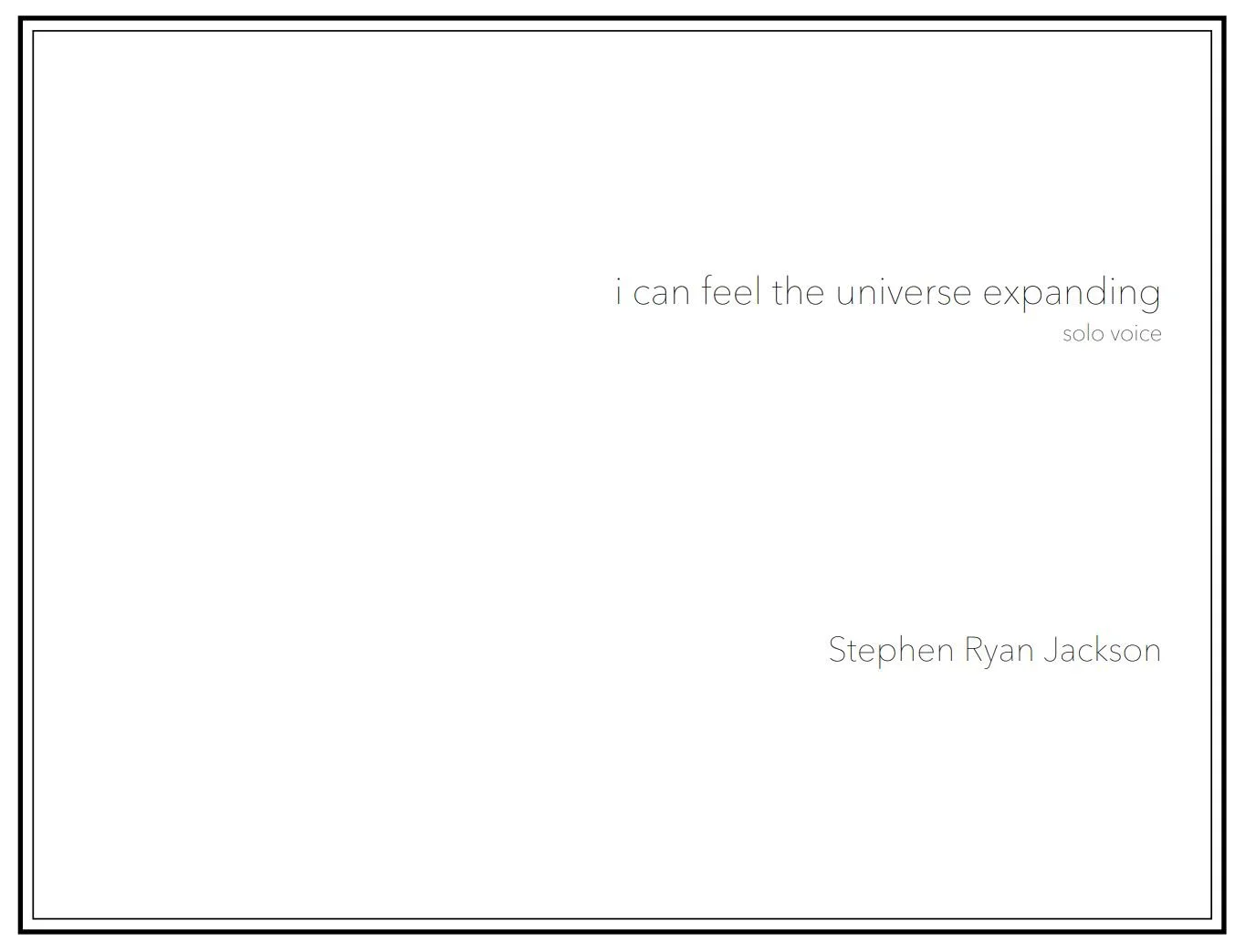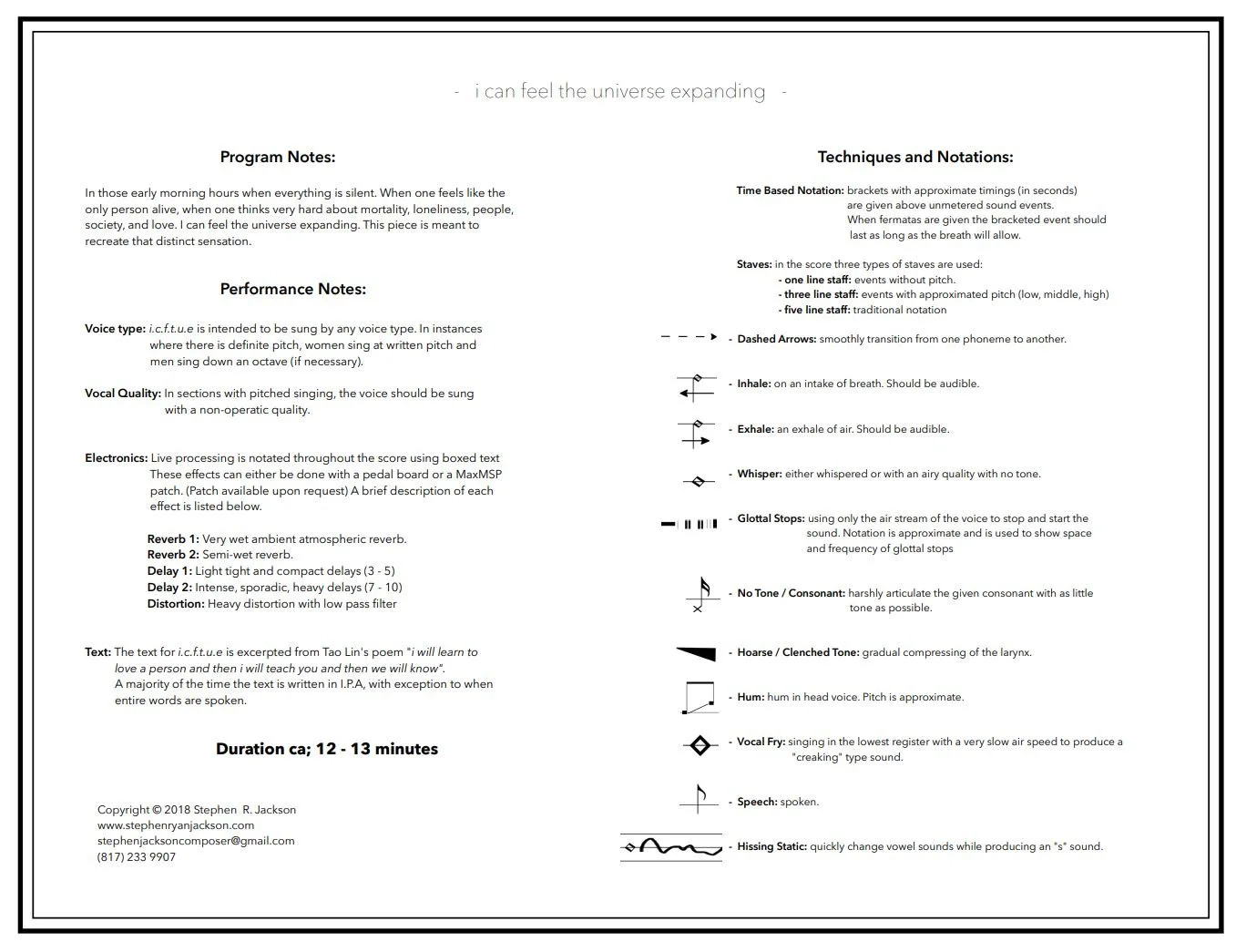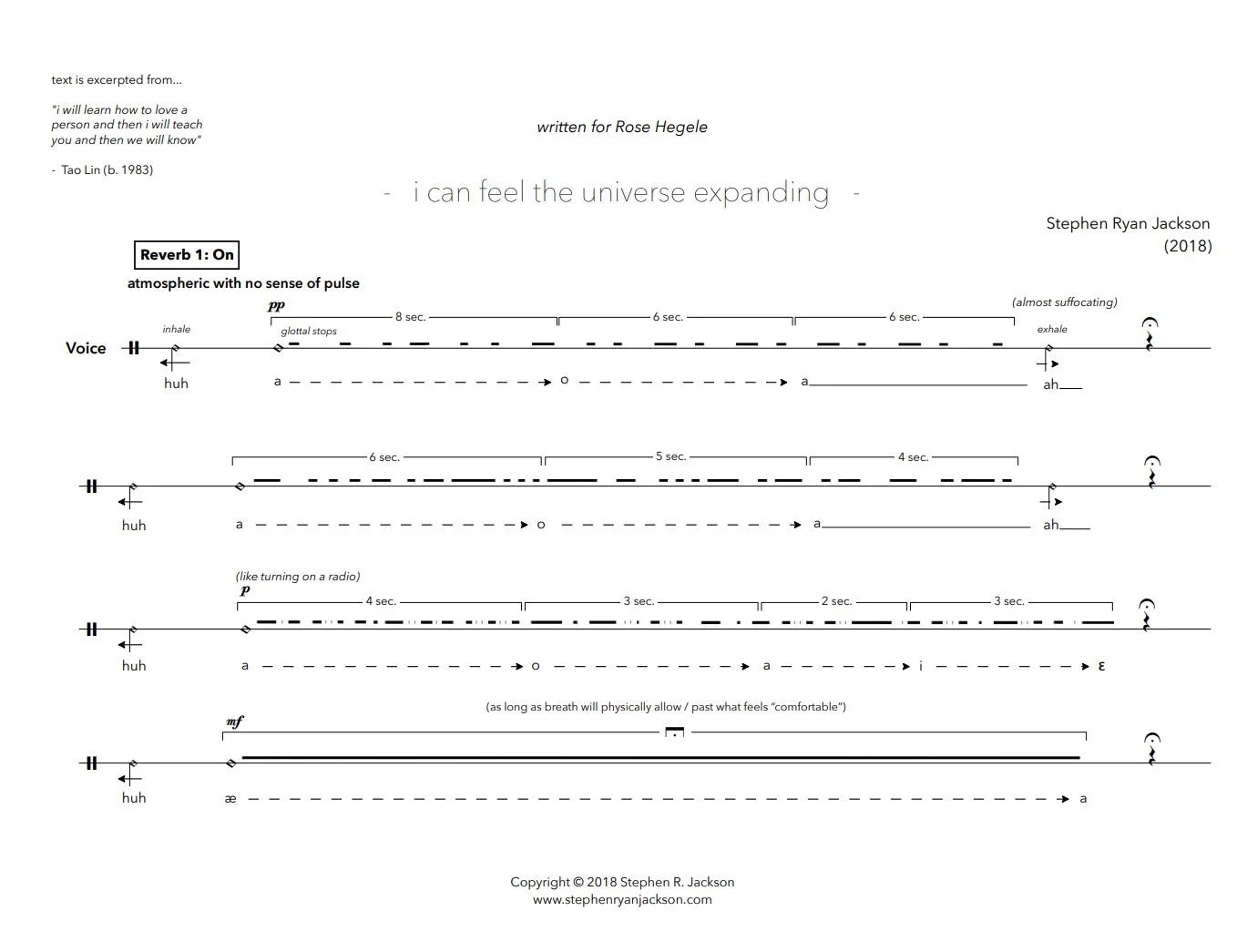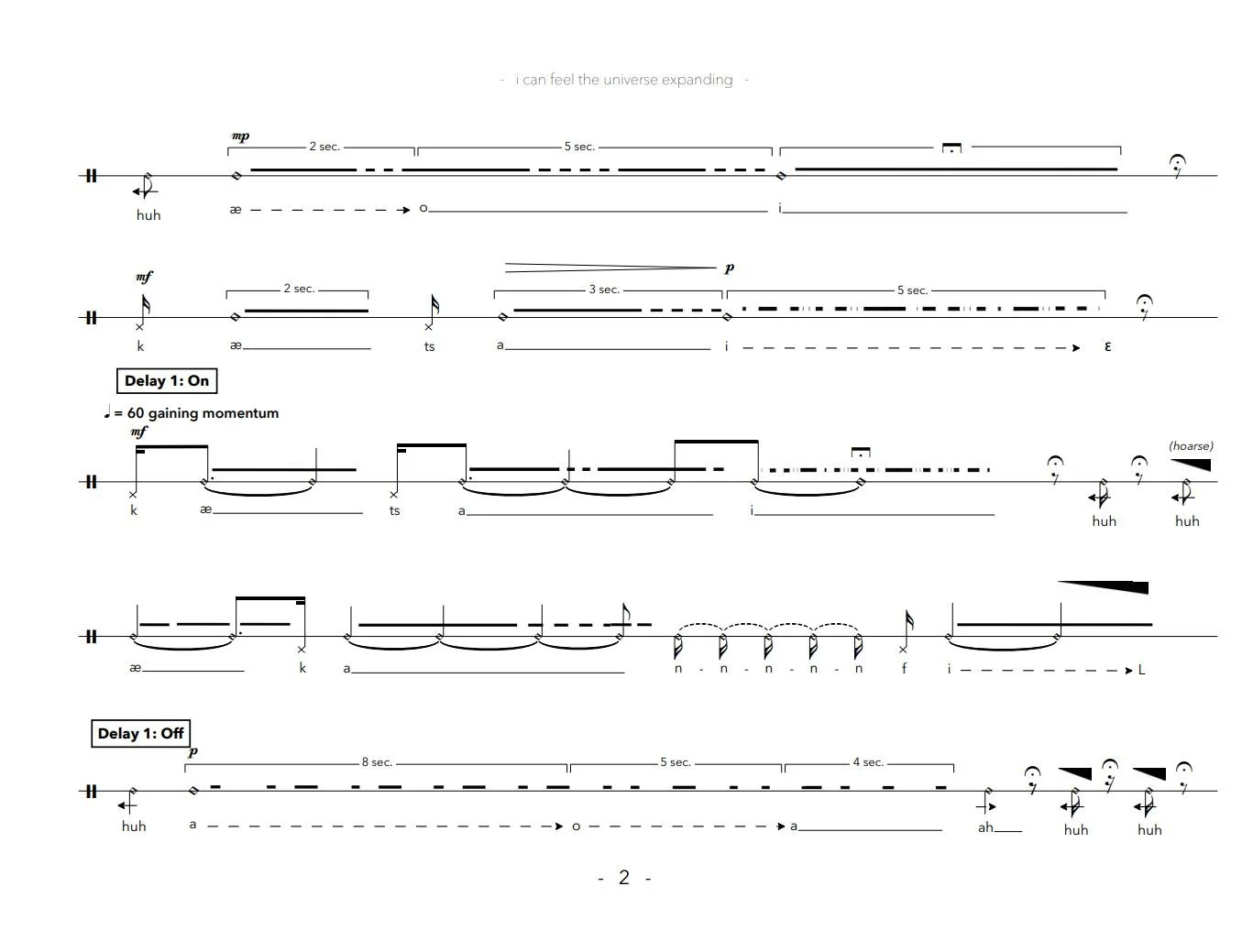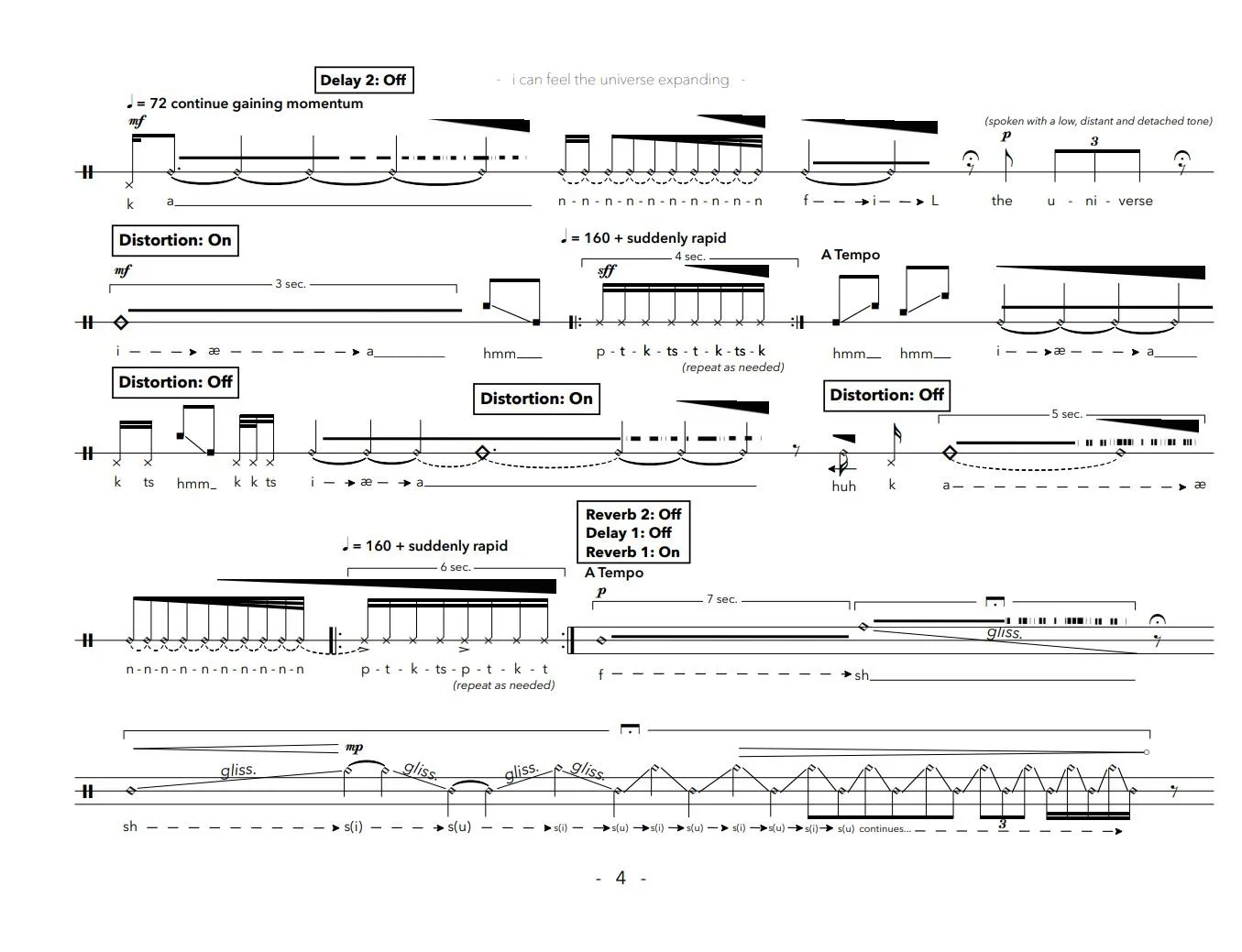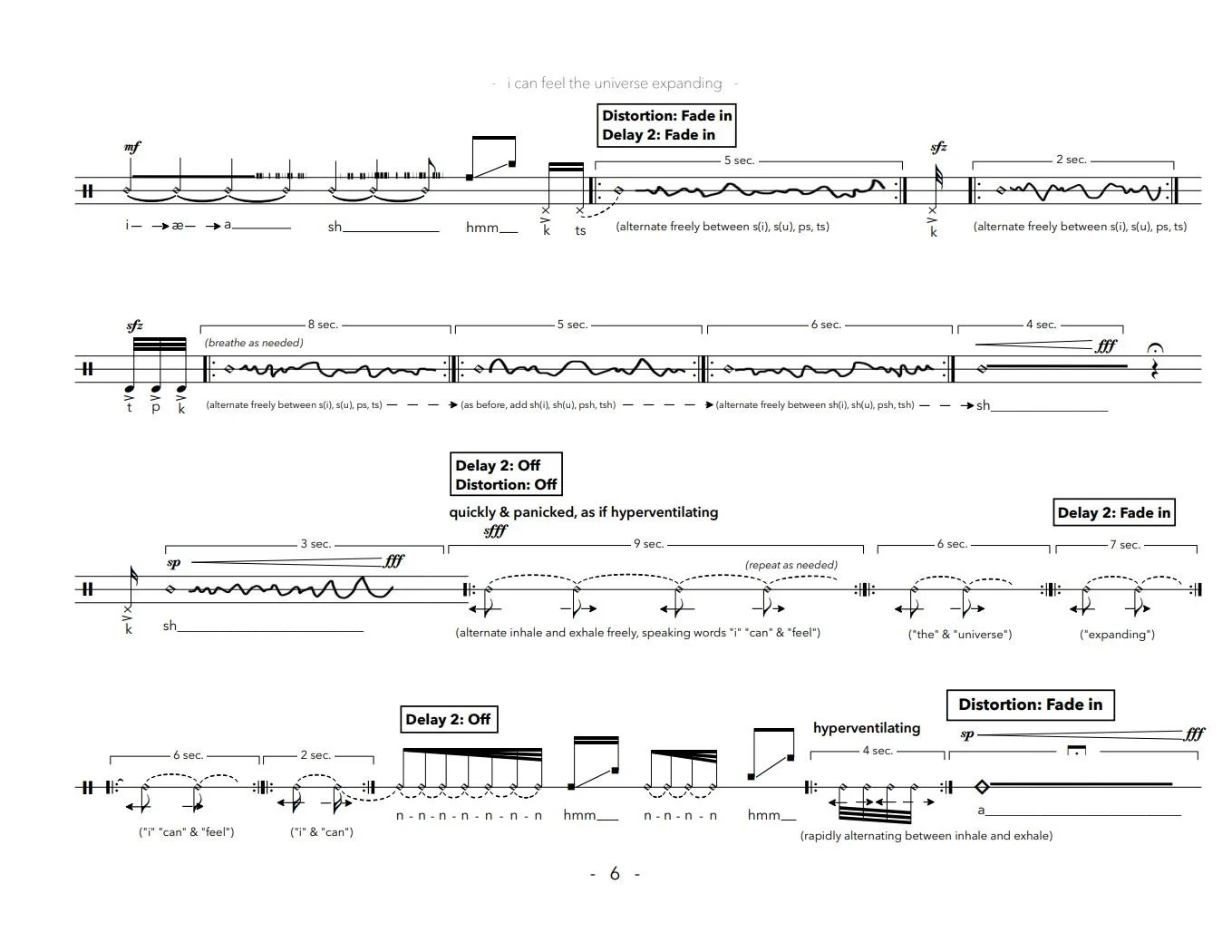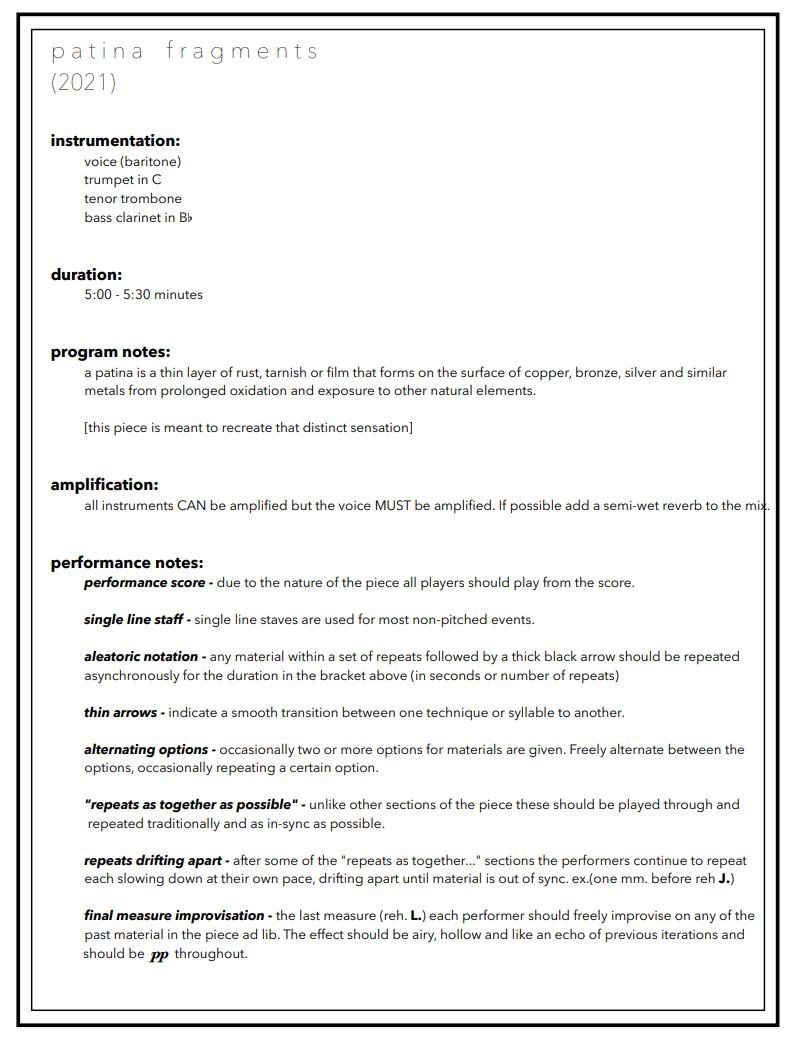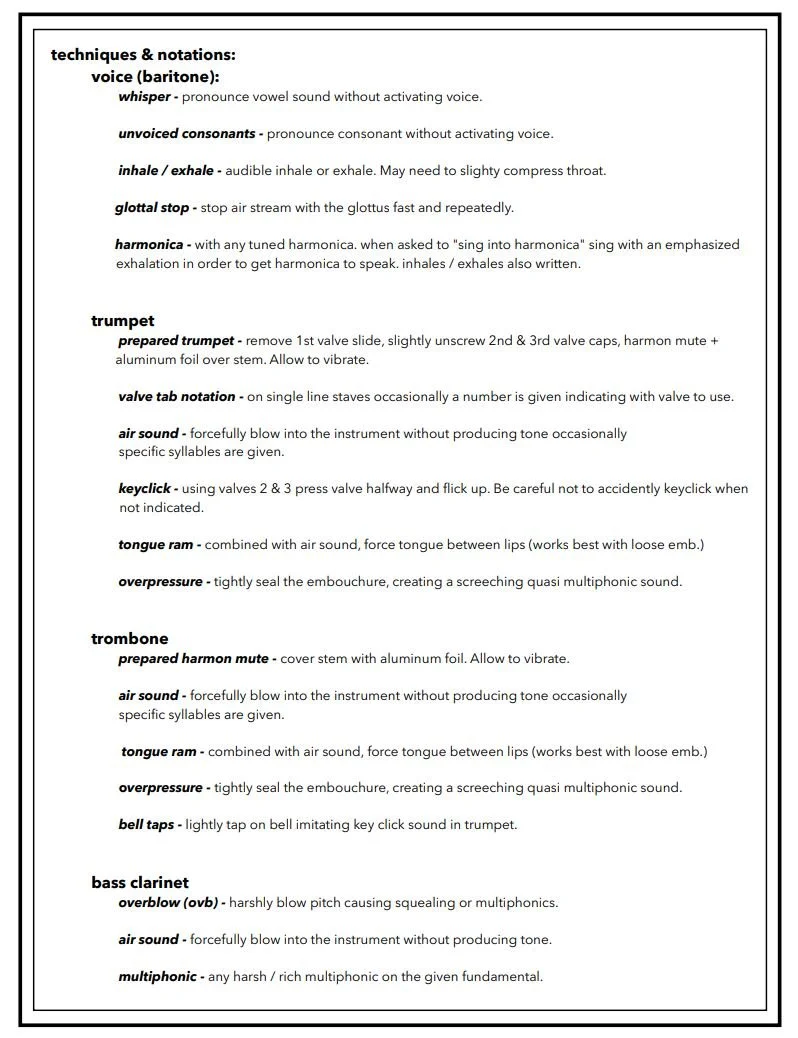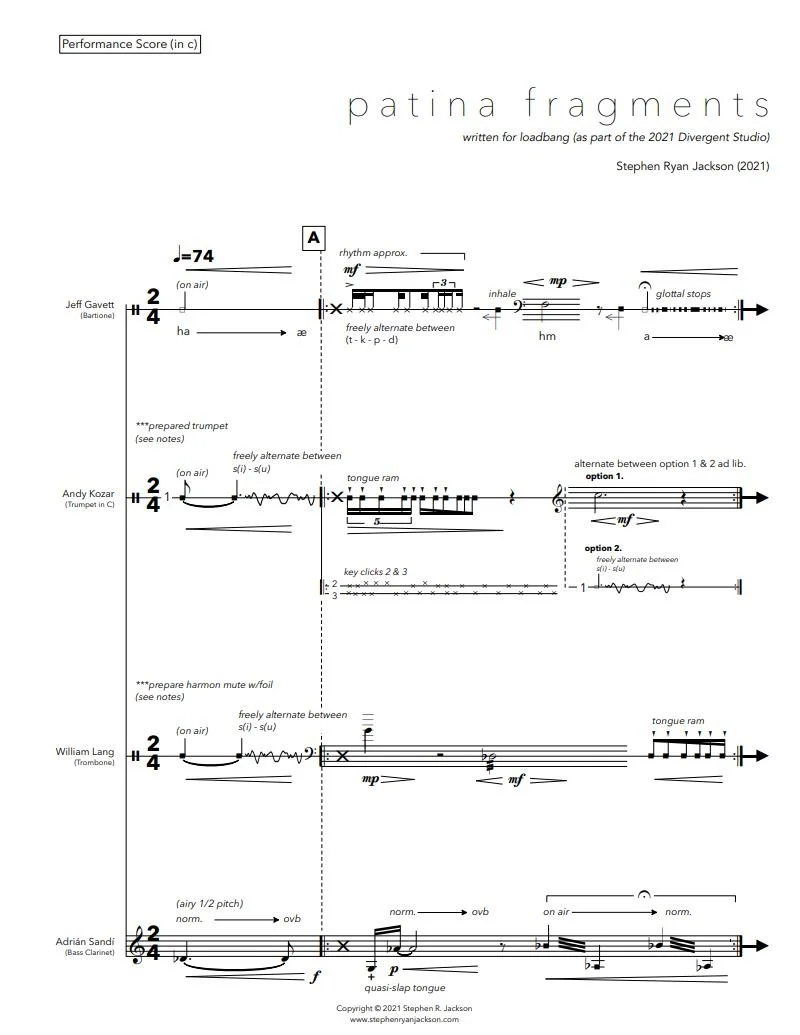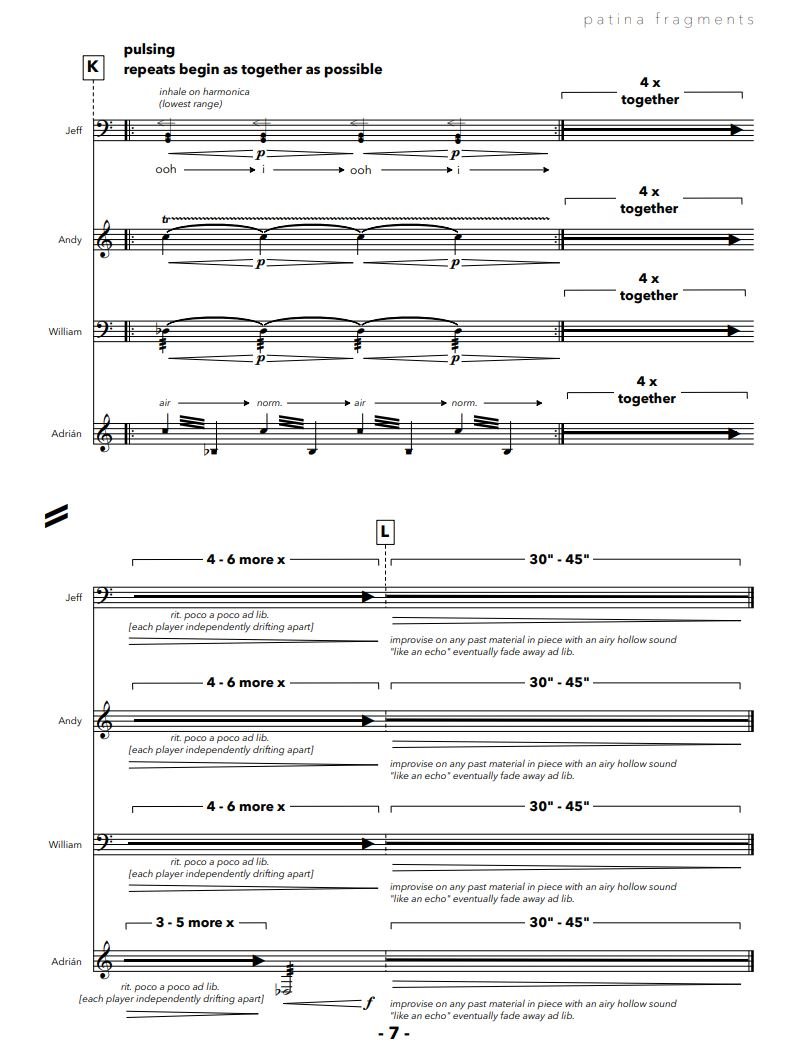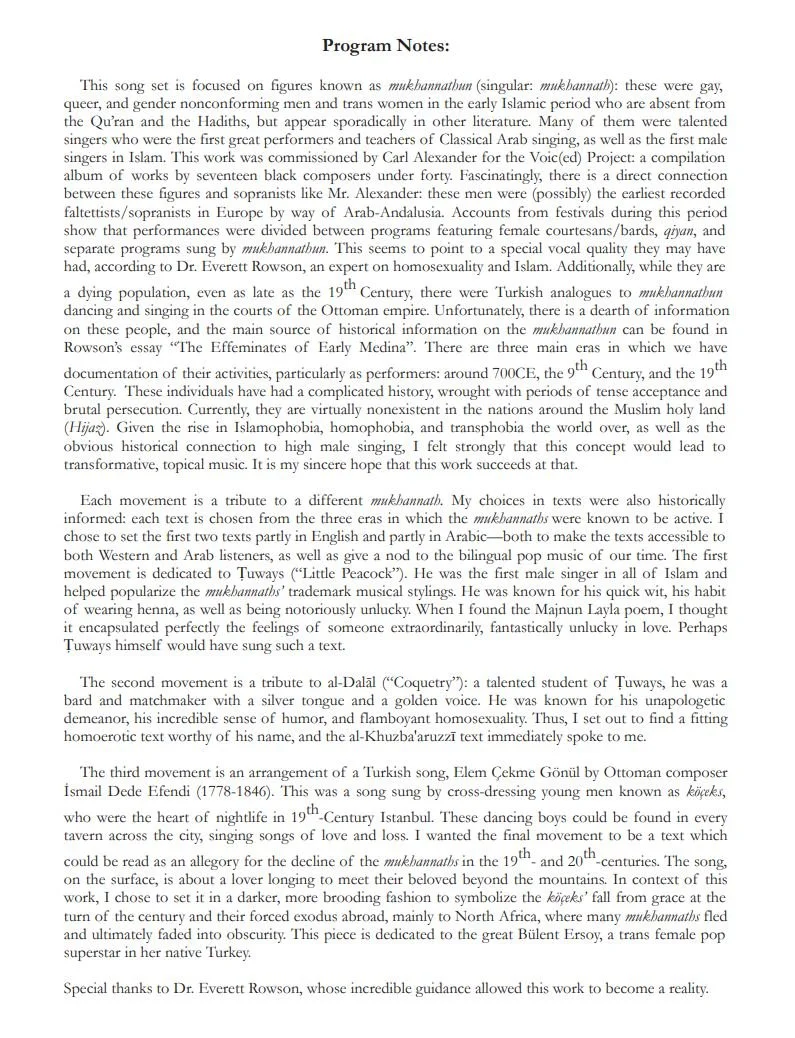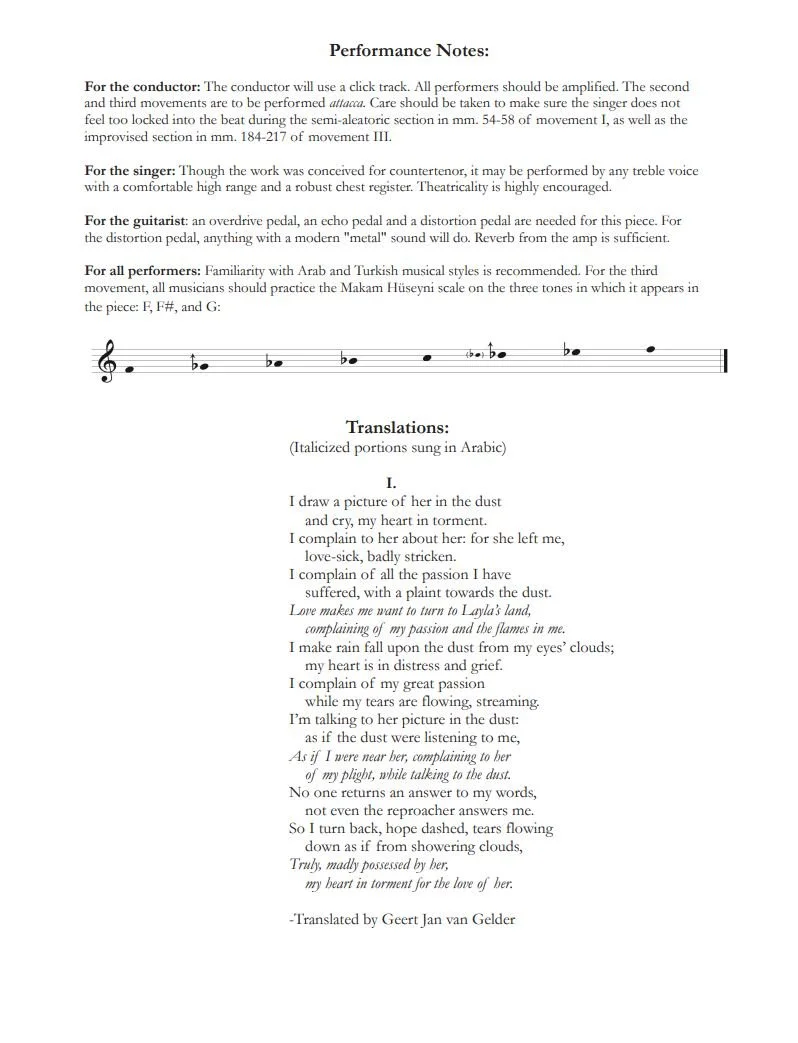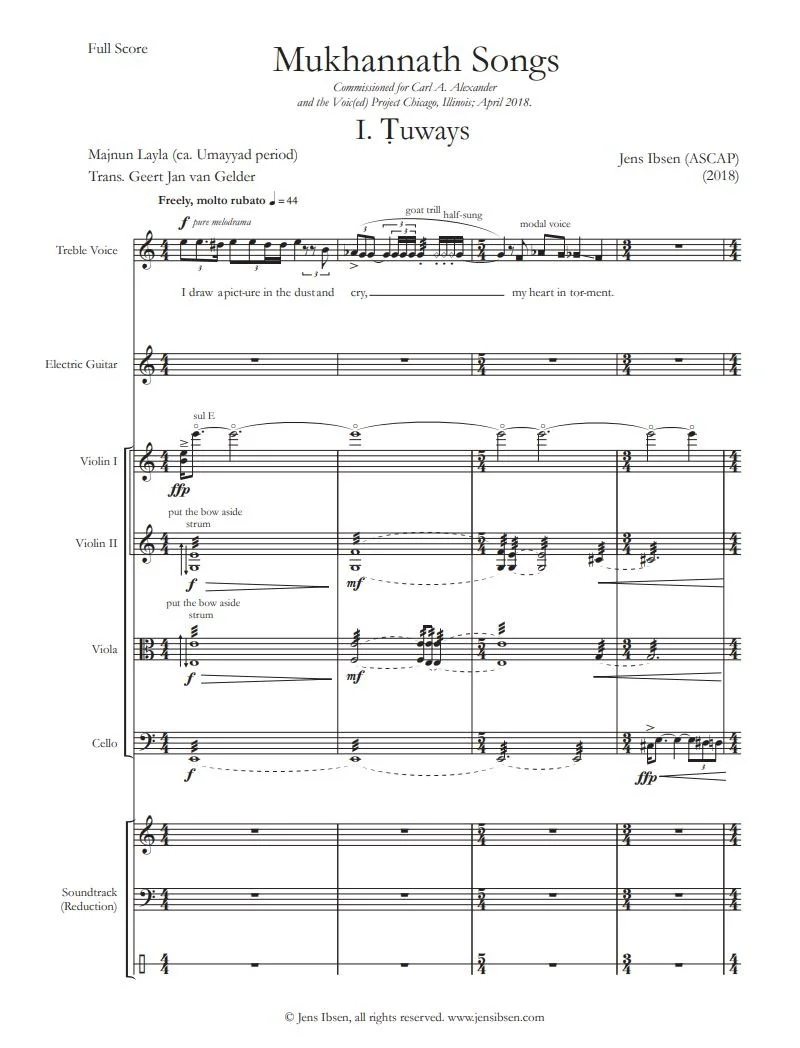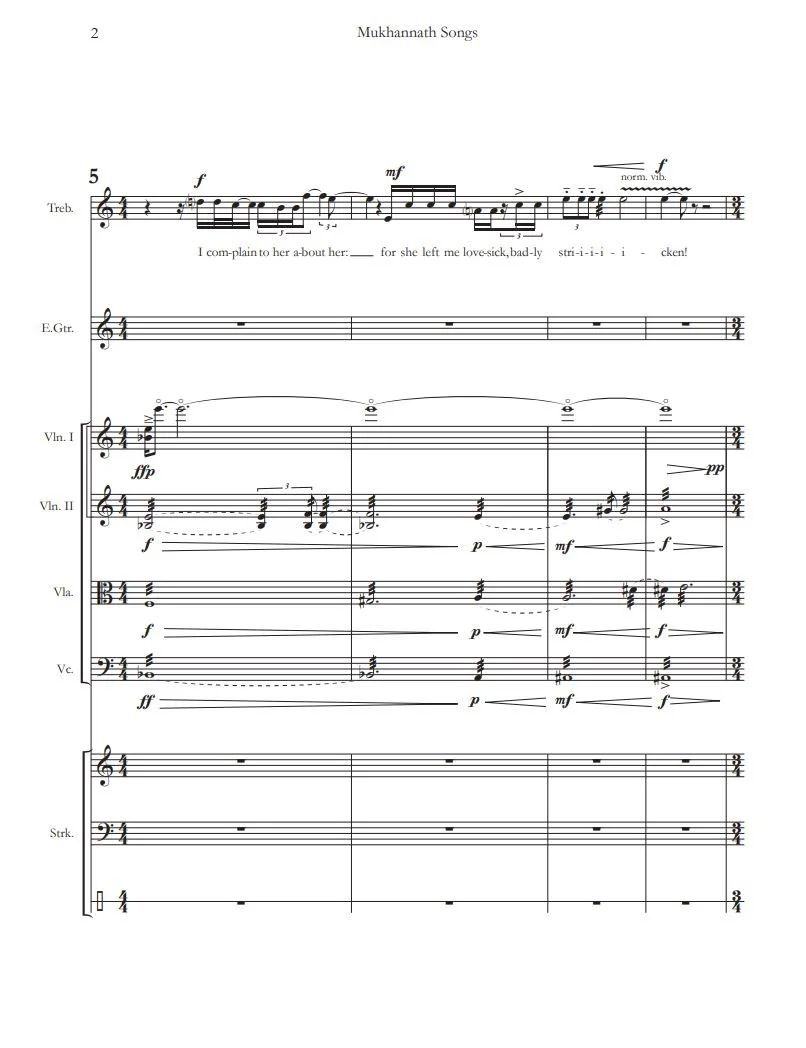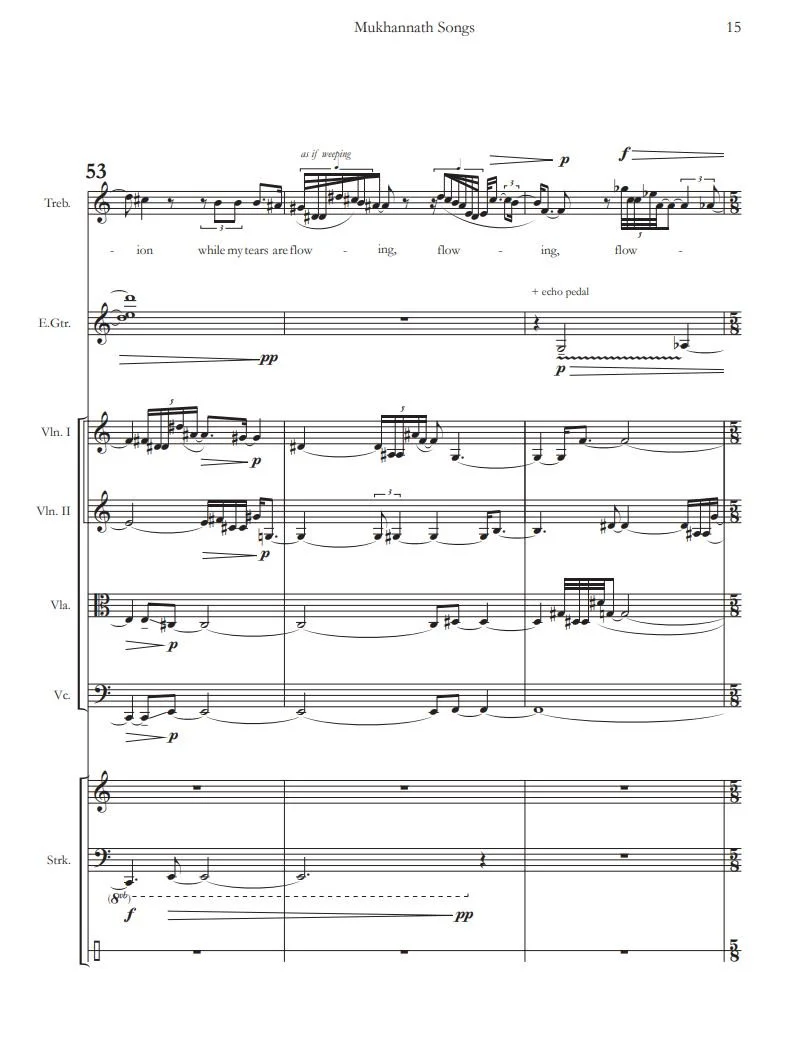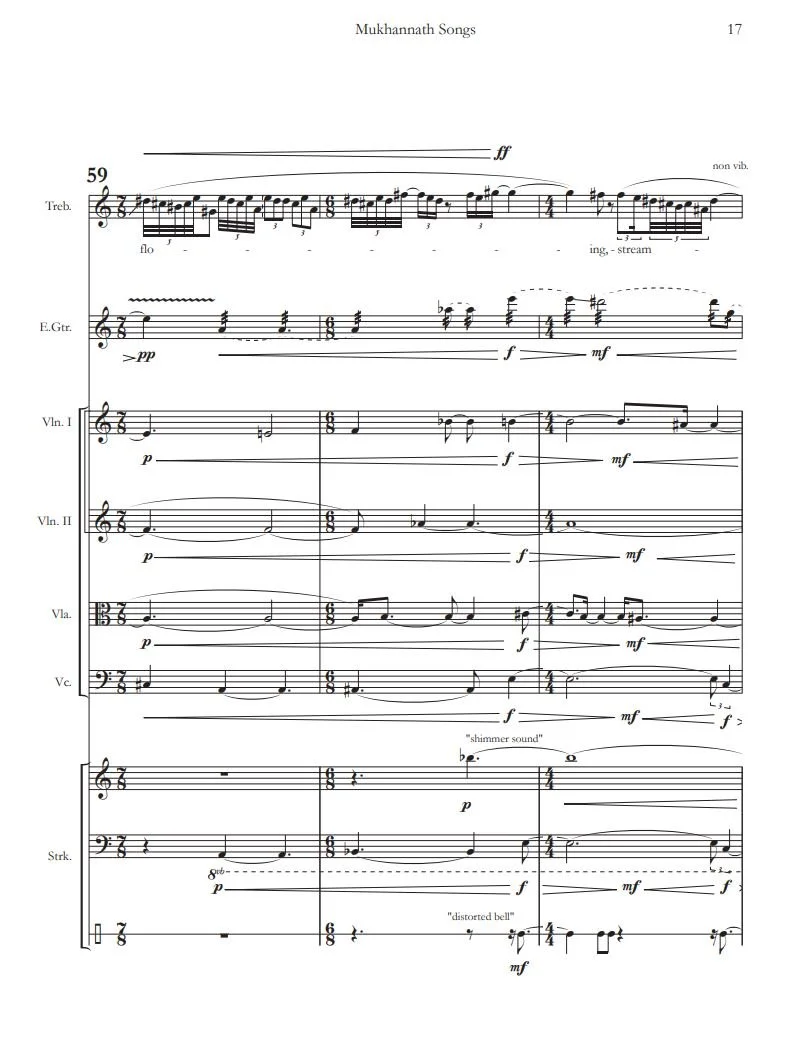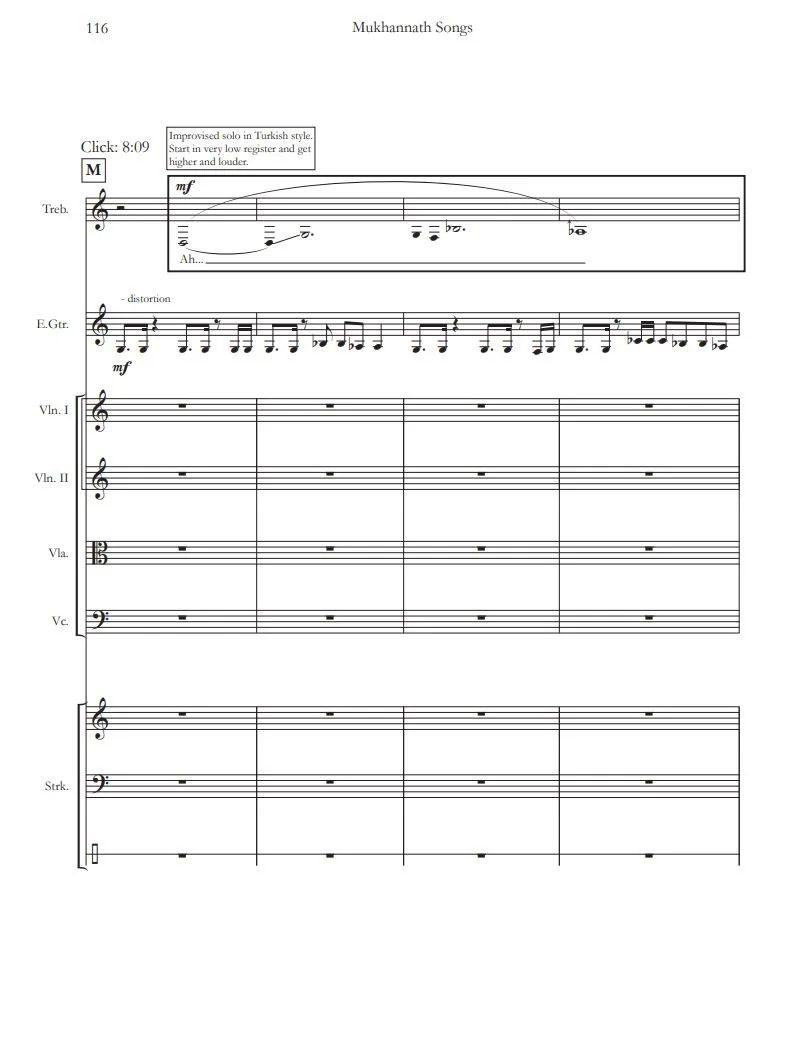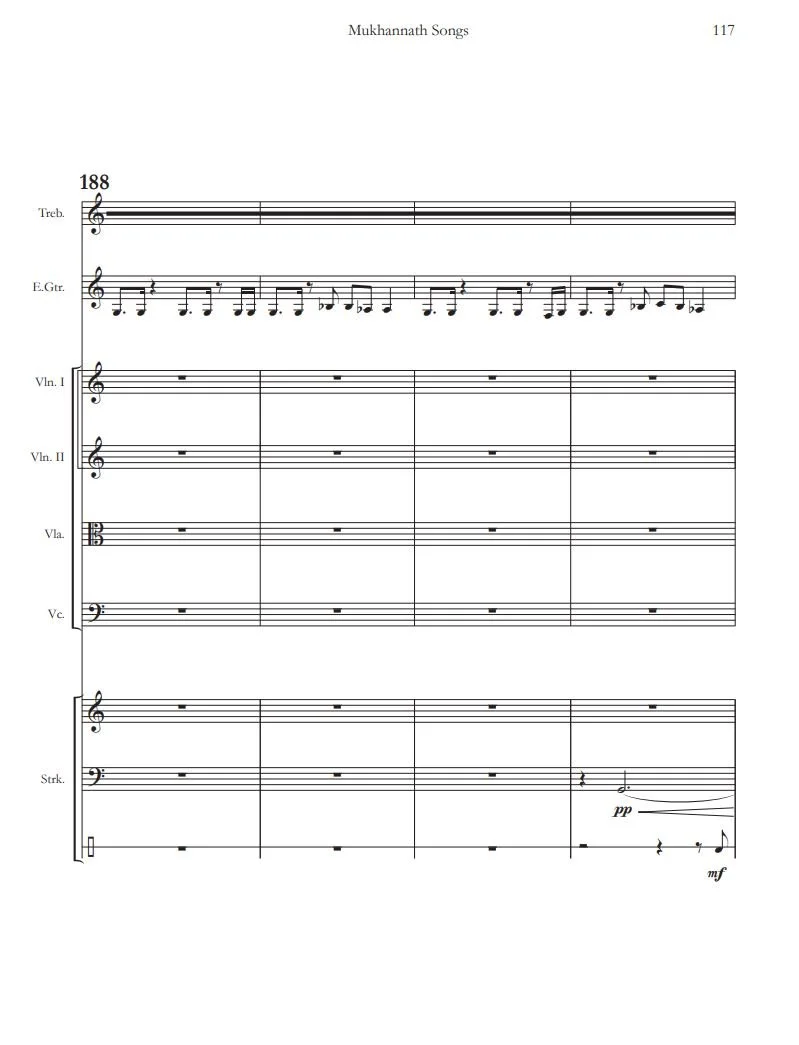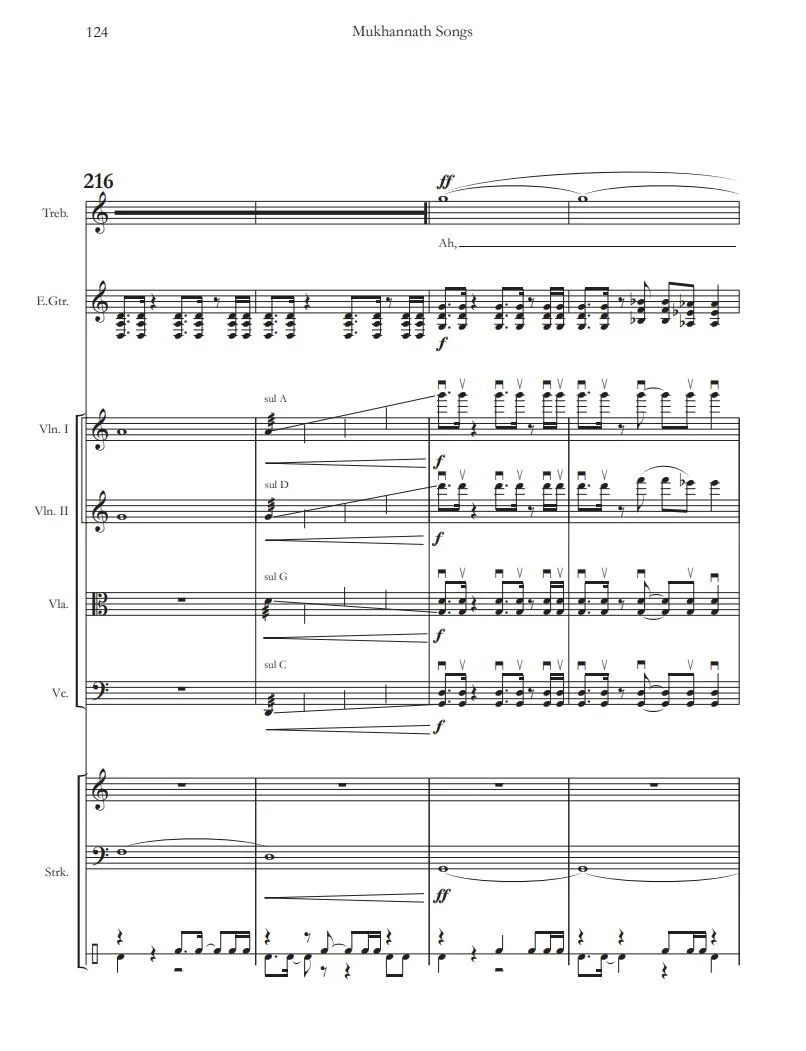
Soprano Voice
General notes from the performer
These sounds are from the perspective of a western classical music opera performer. Other cultures use techniques outside of what is described on this page, but the techniques given here are what have been traditionally used in western classical performance practices.
The human voice is an incredibly complicated and living instrument. Things like sleep, eating habits, exercise, and other bodily habits can change the sound. Composers should work incredibly closely with their singers and create a relationship to understand their strengths and weaknesses.
The voice can be easily amplified with a microphone which extends the dynamic range to the extremes. This is particularly useful for softer techniques such as whispers .
Because each voice is different biomechanically, many of the dynamic limitations change on a person-to-person basis. Many performers have incredible capabilities that go beyond what is written in this anthology which is why it of the utmost importance to always consult with the performer on what is possible.
We will also include some terms that are deemed important to take full advantage of the voice’s possibilities.
TA and CT Voice: Thyroarytenoid voice, also called the “chest voice”; Cricothyroid voice, the “head voice”
Passaggio: Different parts of your voice where the voice shifts from head to chest. For a soprano, the switch will usually happen around E to F#4
CT Dominant Singing
The cricothyroid/chest voice offers more of the traditional western classical singer sound. This type of singing is the basis of classical music and operatic singing.
Dynamic Range: n - ff
Goat Trill
This techniques was often used in baroque music as as timbral trill and/or ornament. It is attached to Monteverdi and his works as it was so prevalent. Notation can be indicated with “tr” above the notes it is asked of and the players will make the decision based on the style whether to perform the trill as the goat trill or a traditional trill.
Dynamic Range: n - ff
Inhaled Singing
Inhaling provides a different texture for singing. This can be taxing fairly quickly, so discuss the limits with your performer beforehand. Composers should know that breaths are much shorter so phrases may need to be broken up more often.
Dynamic Range: n - f*
*Niente to fortissimo in solo contexts but can be drowned out in ensemble contexts.
Mouth Percussion
Lip pops, consonant clusters, tongue clicks, inhales and exhales, coughs, and aspirations are all well-projecting and common “percussion” sound effects used by vocalists. Composers should create a key in their performance notes to indicate sounds on the staff. Some ideas include “x”, triangle, and square note heads.
Dynamic Range: n - mf
*The dynamics are dependent upon what mouth percussion is being performed. Additionally, as seen in other types of performance such as beat-boxing, mouth percussion is amplified.
Operatic Screams
Both operatic screams and vocally fried screams are included. Discuss with the player about where their scream falls in terms of CT and TA voice.
Dynamic Range: f - ff*
*The nature of the technique is to be incredibly loud, so low dynamics are limited.
Other genres
Other trainings in music provide textural and tonal changes in the voice. Here are some examples of pop, musical theater, choral, and operatic singing. Every performer has different backgrounds, so discuss with them about what they can do.
Passaggio With Different Vowels
Passaggios indicate the switching point between head and chest voice. These switching points function similar to the clarinet breaks that happen between registers. Players have 3 different passaggios: a low, medium, and high register. Each specific note where this happens will vary from player to player. For each player, the technique, vowels, and intonation can become a bit more unstable. Recorded are the 3 different passaggios.
While there is nothing to notate about passaggios themselves, composers should understand how these breaks function with the performers’ voice.
Siren
This sound uses the vowels “E”, “Ah”, and “Oo”. This sound is typically used as an effect and some say it resembles an ambulance.
Dynamic Range: n - ff
Sprechstimme
Spoken text with rhythms which can be pretty ambiguous at times. Composers must be specific as to whether they want specific pitches or simply a gesture.
Dynamic Range: n - ff
Straight Tone
Depending on the player, sometimes straight tone is preferred at the higher registers. The “Oo” vowel is used for this recording.
Dynamic Range: n - ff
TA Dominant Singing
Chest dominant singing, this generally produces a brighter and more resonant sound. Has a bit of a “smile” in the sound.
Dynamic Range: n - ff
Vocal Fry
Included are pitched and unpitched vocal fries. Players ask that you do not use this technique for unreasonably long as it can get tiring and straining on the vocal cords. This sound projects very well, even in ensemble settings.
Dynamic Range: n - mf*
*Vocal fry is amplified in many performance practices.
Whispers
Although it is a great effect, it must be amplified in most settings. Players can produce both pitched and unpitched whispers.
Dynamic Range: n - mp
Whistle Voice
This is part of the extremely high range of the voice. For our performer, C6 to E6 is that range. The tone becomes much thinner and cannot be as loud.
Dynamic Range: p - f
Works
